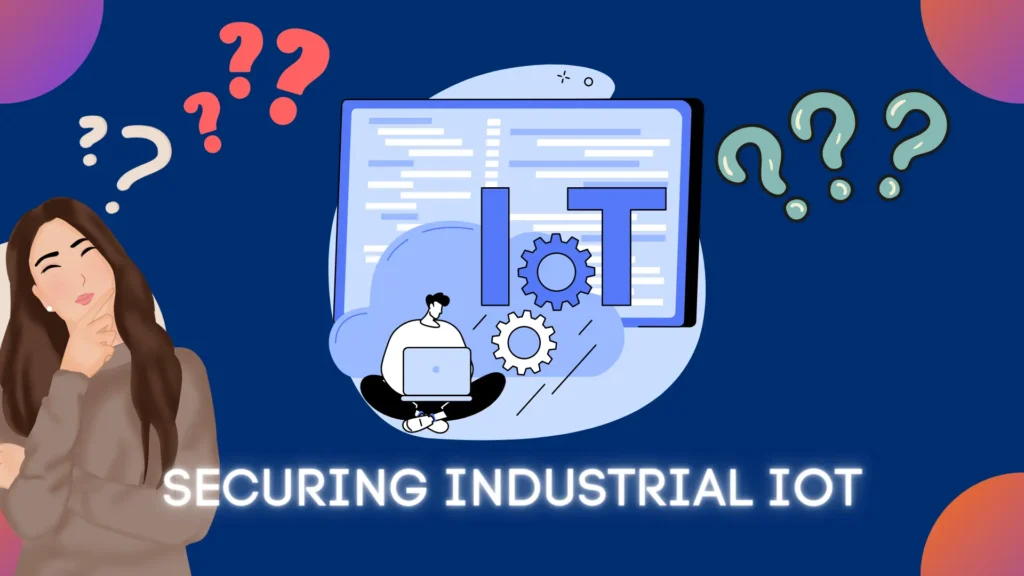Are you aware that What is the Security for the Industrial Internet of things? if not, then do not worry, you are on the correct article, I am a cyber security expert and in this article, I will be telling you about it. So stay tuned in the article
Introduction
The Industrial Internet of Things (IIoT) is rapidly growing, connecting industrial systems and devices to the internet. This increased connectivity brings many benefits, such as improved efficiency and data analysis, but it also introduces new cybersecurity risks. This article will discuss security for the industrial Internet of things and how to protect industrial systems and devices from cyber threats.
The Industrial Internet of Things (IIoT) is an emerging technology that connects industrial systems and devices to the internet, allowing for the collection and analysis of data. This increased connectivity has the potential to revolutionize many industries, such as manufacturing, energy, transportation, and healthcare by improving efficiency, reducing downtime, and increasing productivity. However, with the increased connectivity also comes increased vulnerabilities and cyber threats. Cybercriminals can exploit vulnerabilities in these systems and devices to gain access to sensitive information, disrupt operations, and even cause physical damage. It is vital for organizations to take security measures to protect their industrial systems and devices from cyber attacks. This article will explore the security measures and best practices that organizations can adopt to protect their IIoT systems and devices from cyber threats.
Understanding the Industrial Internet of Things
The Industrial Internet of Things (IIoT) refers to the connection of industrial systems and devices, such as manufacturing equipment, control systems, and sensors, to the internet. This connectivity allows for the collection and analysis of data, which can be used to improve efficiency, reduce downtime, and increase productivity. However, this increased connectivity also introduces new cybersecurity risks.
The IIoT encompasses a wide range of industrial systems and devices, such as programmable logic controllers (PLCs), supervisory control and data acquisition (SCADA) systems, and industrial control systems (ICS). These systems and devices are used in various industries, including manufacturing, energy, transportation, and healthcare. Connecting these systems and devices to the internet allows for the collection and analysis of data, which can be used to improve efficiency, reduce downtime, and increase productivity.
However, the increased connectivity of the IIoT also makes industrial systems and devices more vulnerable to cyber-attacks. Cybercriminals can exploit vulnerabilities in these systems and devices to gain access to sensitive information, disrupt operations, and even cause physical damage.
The Current Threat Landscape
The current threat landscape for the IIoT is constantly evolving, with new cyber threats emerging regularly. These threats can include malware, advanced persistent threats (APTs), and denial of service (DoS) attacks. These types of attacks can cause significant damage to industrial systems and devices, such as disrupting production, stealing sensitive data, and causing physical harm.
Attackers are increasingly targeting industrial systems and devices, as they can be used as a gateway to access other critical systems and networks. This makes the IIoT a prime target for cybercriminals and nation-state actors.
The current threat landscape for the IIoT is constantly evolving, with new cyber threats emerging regularly. These threats can include malware, advanced persistent threats (APTs), and denial of service (DoS) attacks. Cybercriminals are also exploiting vulnerabilities in industrial systems and devices to gain access to sensitive information and disrupt operations.
One of the most common types of attacks on the IIoT is the use of malware, such as the Stuxnet worm, which can cause damage to industrial systems and devices. APTs are also a concern, as they are designed to evade detection and can persist on a network for long periods of time. DoS attacks can also cause significant damage, as they can disrupt operations and cause physical damage.
Additionally, attackers are increasingly targeting industrial systems and devices as a way to gain access to other critical systems and networks. This makes the IIoT a prime target for cybercriminals and nation-state actors. Organizations need to be aware of these threats and take steps to protect their industrial systems and devices from cyber attacks.
Challenges of Securing the IIoT
Securing the IIoT is a complex challenge, as industrial systems and devices have unique characteristics that make them different from traditional IT systems. These characteristics include:
-Lack of security measures: Many industrial systems and devices were not designed with security in mind, and may not have built-in security measures.
Limited resources: Industrial systems and devices may have limited resources, such as memory and processing power, which can make it difficult to implement security measures.
-Limited connectivity: Many industrial systems and devices may be located in remote or inaccessible areas, making it difficult to monitor and update them.
-Legacy systems: Many industrial systems and devices are legacy systems that may not be able to support modern security measures.
-Real-time constraints: Industrial systems and devices may have real-time constraints, such as the need to maintain a consistent process flow, which can make it difficult to implement security measures without disrupting operations.
Best Practices for Securing the IIoT
To secure the IIoT, organizations should adopt a comprehensive security strategy that includes the following best practices:
Network segmentation: Segmenting industrial networks from other networks can help to limit the damage if a cyber attack occurs.
Monitoring and detection: Implementing monitoring and detection systems, such as intrusion detection systems (IDS) and security information and event management (SIEM) systems, can help to detect and respond to cyber threats.
Asset management: Keeping an inventory of industrial systems and devices and regularly patching and updating them can help to reduce vulnerabilities.
Access control: Implementing access control measures, such as authentication and authorization, can help to limit access to industrial systems and devices.
Incident response plan: Having an incident response plan in place can help organizations to quickly and effectively respond to cyber incidents.
Employee training: Educating employees on cybersecurity best practices, including how to identify and respond to cyber threats, can help to reduce the risk of human error.
Encryption: Using encryption to protect sensitive data can help to reduce the risk of data breaches.
Third-party security: Organizations should ensure that third-party vendors and service providers have adequate security measures to protect industrial systems and devices.
Conclusion
Securing the Industrial Internet of Things (IIoT) is a complex challenge, as industrial systems and devices have unique characteristics that make them different from traditional IT systems. However, organizations can effectively protect their industrial systems and devices by adopting a comprehensive security strategy that includes best practices such as network segmentation, monitoring and detection, asset management, access control, incident response plan, employee training, encryption, and third-party security from cyber threats. As the IIoT continues to grow, it is essential for organizations to stay ahead of the curve by continuously assessing and improving their security measures.


